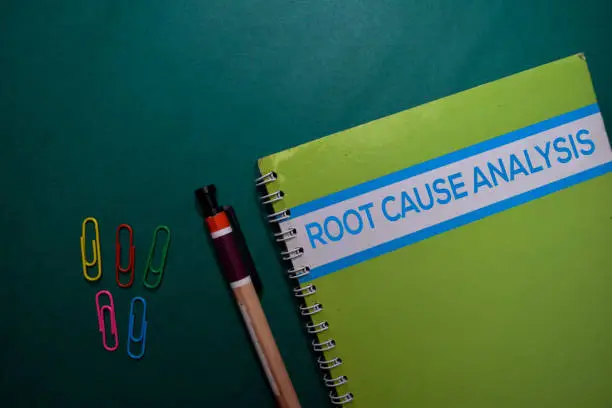rena monrovia when you transport something by car
Introduction
Transporting items by car might seem straightforward, but there’s more to it than simply tossing things into your vehicle and driving off. Whether you’re moving, delivering goods, or just picking up a large purchase, understanding the intricacies of transporting items by car is crucial for safety and efficiency. rena monrovia when you transport something by car
Enter Rena Monrovia, a name synonymous with reliability and expertise in the realm of car transportation. Drawing from her experience and practical wisdom, we’ll delve into the essential aspects of transporting goods by car, from securing your load to understanding legal implications. rena monrovia when you transport something by car
Who Is Rena Monrovia?
Before we dive into the nuts and bolts, let’s talk about Rena Monrovia. Known for her extensive knowledge in vehicle transport and logistics, Rena has become a go-to expert in the field. Her advice is trusted by individuals and businesses alike, and she’s built a reputation for making complex topics simple and accessible. Whether you’re a seasoned driver or a first-timer, Rena’s insights will guide you through the process of transporting goods by car with confidence. rena monrovia when you transport something by car
The Basics of Transporting Goods by Car
Understanding Your Vehicle’s Capacity
One of the first things to consider when transporting anything by car is understanding your vehicle’s capacity. This includes both the weight it can safely carry and the space available.rena monrovia when you transport something by car
- Gross Vehicle Weight Rating (GVWR): The GVWR is the maximum total weight your vehicle can handle, including the car itself, passengers, fuel, and cargo. Exceeding this weight can strain your car’s engine, brakes, and suspension, potentially leading to accidents or costly repairs.
- Cargo Space: Whether you’re driving a compact sedan or a spacious SUV, knowing how much space you have is key. Measure the dimensions of your trunk or cargo area, and consider how your items will fit. If necessary, remove unnecessary items to maximize space. rena monrovia when you transport something by car
Planning Your Load
Once you know your vehicle’s capacity, the next step is planning your load. This involves more than just figuring out what fits where—it’s about ensuring everything is secure and stable. rena monrovia when you transport something by car
- Distribute Weight Evenly: When loading your car, distribute weight evenly to avoid putting too much pressure on one side of the vehicle. Uneven weight distribution can make your car harder to control and increase the risk of accidents.
- Use Cargo Nets or Straps: Securing your load is critical. Use cargo nets or straps to keep items from shifting during transit. If you’re transporting something large, like furniture, make sure it’s tightly secured and can’t move around.
Safety First: Preparing Your Car for Transport
Safety should always be your top priority when transporting goods by car. Here are some key considerations to keep in mind: rena monrovia when you transport something by car
- Check Tire Pressure: Before loading your car, check the tire pressure. Under-inflated tires can’t handle heavy loads as well and are more prone to blowouts.
- Adjust Mirrors: If your load obstructs your rearview mirror, make sure your side mirrors are properly adjusted to give you a clear view of the road.
- Emergency Kit: Always have an emergency kit in your car, including items like a first-aid kit, flashlight, and basic tools. If something goes wrong, you’ll be glad you have these on hand.
Common Scenarios: Transporting Specific Items by Car
Transporting Furniture
Transporting furniture is a common challenge, especially during moves. Here’s how to handle it:
- Measure First: Measure your furniture and your vehicle to ensure it will fit. Don’t forget to account for doorways and angles—getting the furniture out of your home is just as important as getting it into your car. rena monrovia when you transport something by car
- Disassemble When Possible: If your furniture can be disassembled, do so. This makes it easier to transport and reduces the risk of damage.
- Use Blankets or Padding: Protect your furniture and your car by using blankets or padding between the items and your vehicle’s interior. This prevents scratches and other damage. rena monrovia when you transport something by car
Transporting Appliances
Moving appliances like refrigerators or washing machines requires extra care:
- Secure the Doors: Use tape or straps to secure the doors of your appliances to prevent them from opening during transit.
- Keep Upright: Most appliances need to be transported upright to prevent damage. Check the manufacturer’s instructions if you’re unsure.
- Load Strategically: Place heavy appliances at the bottom of your load, with lighter items on top. This helps maintain balance and prevents damage to other items. rena monrovia when you transport something by car
Transporting Fragile Items
Fragile items, such as glassware, electronics, or artwork, need special attention:
- Use Proper Packaging: Invest in quality packaging materials, like bubble wrap and sturdy boxes. Wrap each item individually and fill any empty spaces in the box with packing material to prevent movement.
- Label Boxes: Clearly label boxes containing fragile items, so you remember to handle them with care.
- Avoid Stacking: If possible, avoid stacking heavy items on top of boxes containing fragile goods.
Legal Considerations When Transporting Goods by Car
Understanding Local Regulations
When you’re transporting goods by car, it’s essential to understand the local regulations that may apply. This can include weight limits, securing loads, and even specific rules for certain types of cargo.
- Weight Limits: Some areas have specific weight limits for vehicles on certain roads. Make sure your loaded vehicle complies with these limits to avoid fines or penalties.
- Load Securing Laws: Many places have laws requiring that loads be properly secured. If something falls off your car and causes an accident, you could be held liable.
- Special Permits: If you’re transporting hazardous materials or oversized items, you may need a special permit. Check with local authorities before you hit the road. rena monrovia when you transport something by car
Insurance Implications
Transporting goods can also have insurance implications, especially if you’re moving valuable items:
- Check Your Coverage: Review your auto insurance policy to understand what’s covered when you’re transporting goods. In some cases, you may need additional coverage. rena monrovia when you transport something by car
- Consider Separate Insurance: If you’re transporting particularly valuable or fragile items, consider purchasing separate insurance to cover them during transit.
- Document Everything: Take photos of your items before you transport them. This can help with any potential insurance claims if something is damaged or lost . rena monrovia when you transport something by car
Tips for Long-Distance Transportation by Car
Preparing for the Journey
Long-distance transportation requires additional preparation to ensure everything goes smoothly:
- Map Your Route: Plan your route in advance, including rest stops and places where you can safely park and check your load. Avoid routes with narrow or winding roads if you’re carrying a large or awkward load.
- Fuel Up: Make sure your car is fully fueled before you start. If you’re transporting a heavy load, your vehicle may use more fuel than usual, so plan your stops accordingly.
- Stay Rested: If you’re driving a long distance, make sure you’re well-rested before you start. Driving while tired can be just as dangerous as driving under the influence. rena monrovia when you transport something by car
Maintaining Vehicle Performance
Keeping your vehicle in top shape is crucial during long trips:
- Regular Maintenance: Ensure your vehicle is up to date with all regular maintenance, including oil changes, brake checks, and tire rotations.
- Monitor Your Load: Stop periodically to check your load and make sure everything is still secure. It’s better to spend a few minutes tightening straps than dealing with an accident or lost cargo.
- Keep an Eye on the Weather: Weather conditions can change quickly, especially over long distances. Check the forecast before you leave and be prepared for rain, snow, or other adverse conditions. rena monrovia when you transport something by car
Environmental Considerations
Fuel Efficiency and Transporting Goods
Transporting goods by car can have an impact on your fuel efficiency, which in turn affects the environment: rena monrovia when you transport something by car
- Reduce Drag: When possible, reduce drag by placing items inside your vehicle rather than on the roof. Roof racks and trailers increase wind resistance, leading to higher fuel consumption.
- Drive Smoothly: Avoid rapid acceleration and braking, as these behaviors can decrease fuel efficiency. Smooth driving not only saves fuel but also makes for a safer trip.
- Consider Alternatives: If you’re transporting a large load or traveling a long distance, consider renting a more fuel-efficient vehicle or even hiring a professional transport service. This can reduce your environmental impact.
Eco-Friendly Packing Materials
If you’re concerned about the environment, consider using eco-friendly packing materials:
- Biodegradable Packing Peanuts: Instead of traditional Styrofoam peanuts, use biodegradable options made from cornstarch or other natural materials.
- Recycled Boxes: Use boxes made from recycled materials or reuse boxes you already have.
- Minimalist Packing: Try to pack efficiently, using as few materials as possible while still protecting your items.
Rena Monrovia’s Top Tips for Transporting Goods by Car
Expert Advice for Smooth Transport
Drawing from her extensive experience, Rena Monrovia offers these top tips for anyone looking to transport goods by car:
- Know Your Vehicle: Understand your car’s limits and plan accordingly. Overloading your vehicle is a recipe for disaster.
- Secure Everything: Don’t underestimate the importance of securing your load. Even a small item can become dangerous if it shifts or falls during transit.
- Plan Ahead: Whether it’s mapping your route or checking the weather, planning ahead can save you time and trouble on the road.
- Take Your Time: Don’t rush the process. Take your time loading, securing, and driving to ensure everything goes smoothly.
- Stay Safe: Always prioritize safety. Make sure your vehicle is in good condition, and don’t hesitate to stop and check your load if you’re unsure. rena monrovia when you transport something by car
The Rena Monrovia Checklist
To make your next transport as smooth as possible, use this checklist inspired by Rena Monrovia’s advice:
- Measure and weigh your items before loading.
- Ensure your vehicle is properly maintained.
- Secure your load with straps, nets, or padding.
- Plan your route and check the weather.
- Double-check everything before you hit the road.
Frequently Asked Questions (FAQs)
1. Can I transport items on the roof of my car?
Yes, you can transport items on the roof of your car, but it’s essential to use a proper roof rack and secure the load tightly to prevent it from shifting or falling off.
2. What should I do if my load obstructs my rearview mirror?
If your load obstructs your rearview mirror, make sure your side mirrors are adjusted to give you a clear view of the road. Drive with extra caution, especially when changing lanes or reversing.
3. Is it legal to transport goods inside a passenger car?
Yes, it’s legal to transport goods inside a passenger car, as long as you adhere to local regulations regarding weight limits and load securing. Make sure the items do not obstruct your view or interfere with your ability to drive safely.
4. How can I protect fragile items during transport?
Use quality packing materials, such as bubble wrap and sturdy boxes, to protect fragile items. Label boxes clearly, and avoid stacking heavy items on top of them. Consider placing fragile items inside the car rather than in the trunk to minimize movement.
5. What happens if my load is not properly secured?
If your load is not properly secured and falls off the vehicle, you could be held liable for any resulting accidents or damages. Additionally, unsecured loads may lead to fines or penalties in certain areas.
6. Can I use my car insurance to cover items being transported?
It depends on your insurance policy. Some policies may cover personal belongings in the event of an accident, but others may not. It’s advisable to review your policy or consider additional coverage if you’re transporting valuable items.
7. What should I do if my vehicle breaks down during transport?
If your vehicle breaks down during transport, pull over to a safe location and use your hazard lights to alert other drivers. Contact roadside assistance and stay with your vehicle until help arrives.
Conclusion
Transporting goods by car might seem daunting, but with the right knowledge and preparation, it can be done safely and efficiently. Rena Monrovia’s expertise offers invaluable insights into making the process smoother, whether you’re moving across town or delivering a large purchase.
Remember, the key to successful transportation lies in understanding your vehicle, securing your load, and planning ahead. By following the tips and advice outlined in this article, you’ll be well-equipped to handle any transportation challenge that comes your way.
So the next time you’re faced with the task of transporting something by car, take a page out of Rena Monrovia’s book. With careful planning and a little know-how, you’ll be able to transport your goods with confidence and peace of mind. Safe travels!









Post Comment